Lyman Lakes
Ben Weiss
Ninety-one years old, Stewsie was seen on a rain-soaked spring of 1974 working on and directing a landscape project near Carleton’s main campus. A “peripatetic dynamo of a little man,” D. Blake Stewart (affectionately known as Stewsie) left an indelible mark on Carleton’s campus. Responsible for much of the college’s current natural scenery, Stewsie was Carleton’s “crusty, cantankerous, hard-driving” superintendent of buildings and grounds.
A “little tiger,” Stewsie was beloved by the Carleton student body. When he returned from a trip to Europe, where he studied landscaping techniques at the Louvre and the Royal Botanical Gardens, Kew, Stewsie was greeted with an article in the Carletonian titled, “Welcome Home.”
Perhaps Stewsie’s greatest contribution to Carleton’s campus was his landscaping of the Lyman Lakes. In fact, in an interview with the Carletonian, he said, “Those lakes are the greatest physical assets this institution has.”
A gift of Trustee George R. Lyman and his wife, Marietta, of Minneapolis in memory of their son George Huntington Lyman, the lakes date from 1916-1917. In the fall of 1916, a Duluth dredging outfit worked twenty-four hours a day to dredge the lake beds and form two islands. Bathing beaches were created for both lakes. For many years, the lakes served as the swimming facilities for the town. In the winter, skating and hockey facilities and toboggan slides were constructed near the upper lake.
To make the islands accessible, Stewsie built two wooden bridges to connect them to the shore. Once constructed, the larger island (aptly named Mai Fete) was used for yearly spring dance pageants until the mid-1960s when the tradition fell out favor with the student body. And appropriately, the smaller island in the lower lake is eponymously named “Stewsie.”
Stewsie Island
The smaller of the two islands in Lyman Lakes, Stewsie Island is not home to a meditative labyrinth constructed in 2002.
Stewsie In Front of Olin
After officially retiring, Stewsie still volunteered as makeshift groundskeeper until his early nineties. Fittingly, he once complained that, “the trouble in this country is that we figure usefulness by age. There is no worse crime than requiring a man to stop working when he is sixty-five.”
Mai Fete Celebration in 1921
Beginning in 1909, Mai Fete was a central Carleton tradition for over a half-century. Operettas, folk dances, and Grecian plays were cyclically performed every spring. In 1921, Mai Fete was moved to the larger of the two islands in Lyman Lakes. With the surrounding hillsides as makeshift seats and Mai Fete island as center stage, the Lyman Lakes served as a natural amphitheater.
Mai Fete Island bridge
Even though the ice has left Lyman Lakes, a layer of light snow that will quickly melt in the springtime sharpens the silhouette of Mai Fete Island.
Lyman Lakes After Stewsie
With trees, flowers, and various greenery, the Lyman Lakes are a far cry from forty years ago. The building in the distance is Goodhue Hall, a student dormitory designed by architect Minoru Yamasaki.
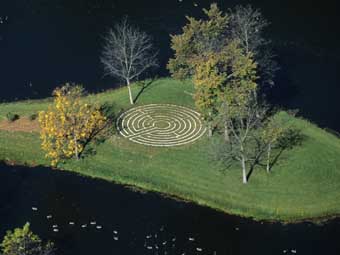
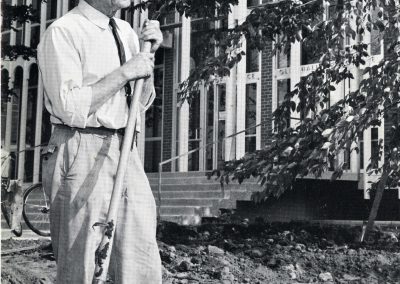
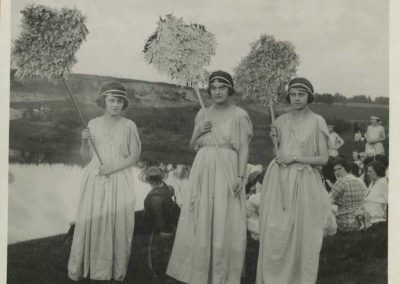
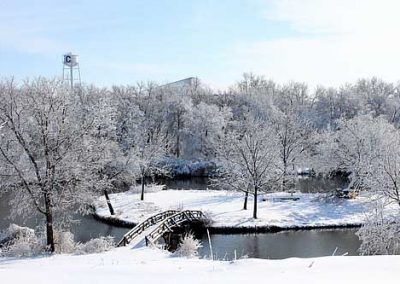
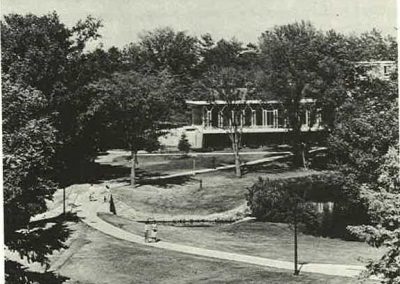
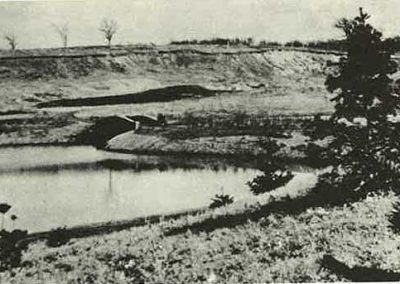
Recent Comments